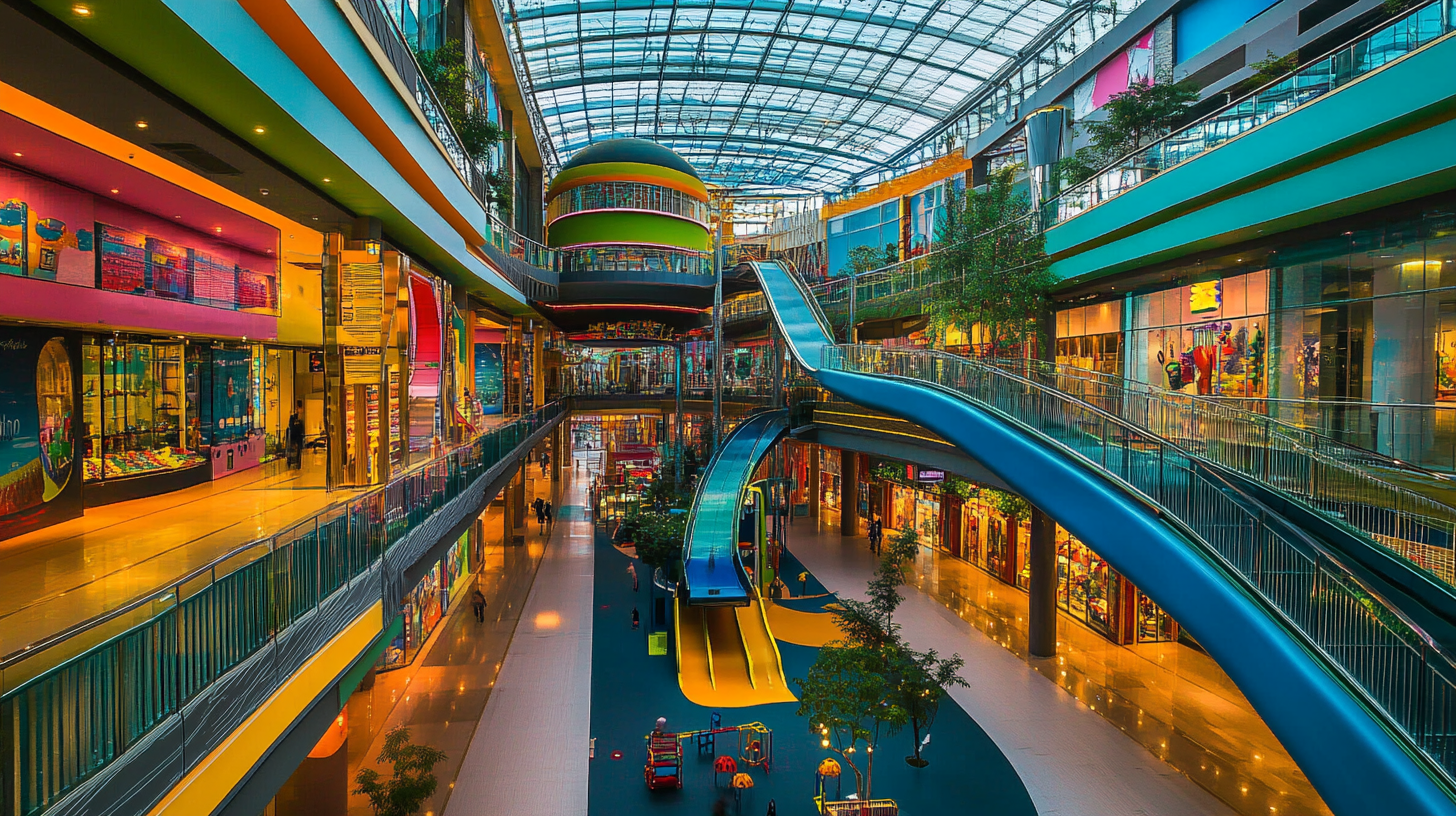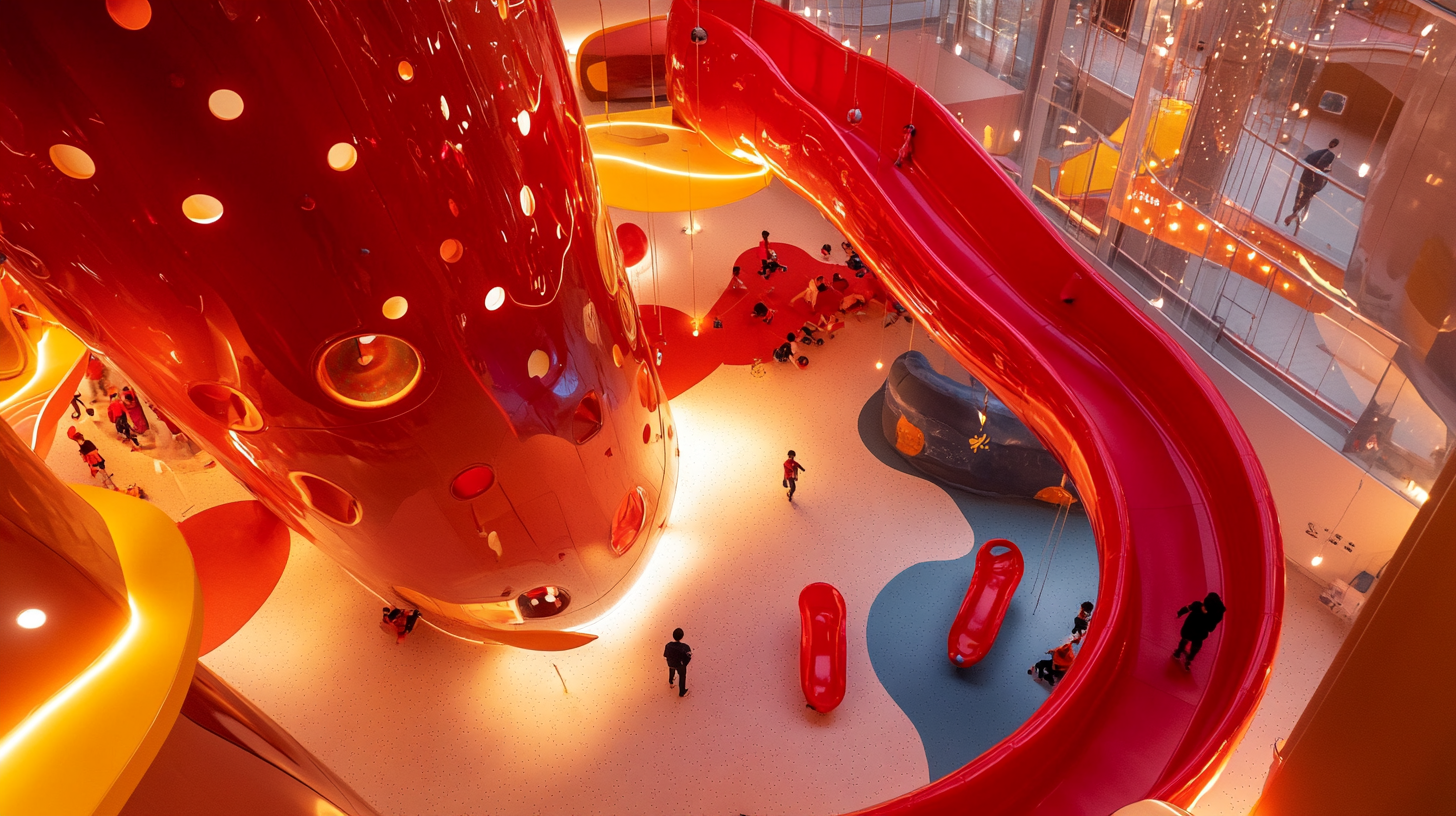
Inquiry
Form loading...
In recent years, the indoor playground industry has witnessed remarkable growth, even amidst the challenges posed by US-China tariff disputes. According to a report by IBISWorld, the indoor amusement park sector has grown by an impressive 5.2% annually over the past five years, highlighting a robust demand for innovative Indoor Playground Structures. As families increasingly seek safe and engaging environments for children to play and socialize, manufacturers in China are capitalizing on this trend. Despite the tariffs, which have raised costs for many U.S.-based companies, Chinese manufacturers have adapted by enhancing their product offerings and improving operational efficiencies. These strategic movements not only sustain their market share but also foster a unique competitive advantage, as they continue to supply high-quality, cost-effective solutions that cater to a burgeoning market. This blog will explore how the indoor playground solutions from China are thriving against the backdrop of these economic challenges.

China's indoor playground industry is harnessing innovative strategies to navigate the challenges posed by the ongoing US-China tariff war. Amidst the imposition of tariffs as high as 245% by the United States, Chinese manufacturers are not merely reacting but are strategically repositioning themselves within the global market. According to industry reports, the value of China’s indoor playground market is expected to reach approximately $3.6 billion by 2025, indicating a robust growth trajectory even under adverse trade conditions.
In response to tariff pressures, many Chinese companies have focused on enhancing product quality and diversifying their market reach, particularly towards Europe and Southeast Asia. By fostering deeper regional economic cooperation, as highlighted in recent trade discussions, these businesses are capitalizing on shifts in the global supply chain. A notable trend is the reported increase in joint ventures and collaborations that allow for shared resources and risk mitigation in times of tariff uncertainty. With foreign markets seeking to establish closer ties with China, the indoor playground sector stands to benefit from a strategically cooperative approach, ensuring sustainable growth despite external pressures.

As the indoor playground industry in China navigates the complexities brought on by US-China tariff challenges, its ability to adapt and thrive is more critical than ever. The resilience of this sector reflects a broader trend seen across various industries, especially in sporting goods, where organizations must confront a rapidly changing landscape. Key trends that are shaping market dynamics emphasize the necessity of flexibility, innovation, and an acute awareness of shifting consumer demands.
China’s indoor playground solutions have been remarkably responsive to these market changes. By leveraging local resources and embracing new technologies, companies have not only maintained their competitiveness but have also positioned themselves to cater to evolving customer expectations. Moreover, as climate change and public health initiatives influence consumer behavior, there is a growing focus on creating safe, engaging, and sustainable environments for children. This responsive approach is indicative of an industry that recognizes the importance of resilience in the face of external pressures, ultimately fostering a more robust market presence.

In recent years, Chinese manufacturing has demonstrated remarkable resilience despite the challenges posed by US tariffs. According to a report from the China National Machinery Industry Corporation, the country's toy and recreational equipment sector has grown by approximately 8.5% year-on-year, even as tariffs have created additional hurdles for exporters. This robust growth can largely be attributed to the strategic shifts made by manufacturers, such as enhancing production efficiency and focusing on high-quality, innovative products tailored to meet international standards.
The impact of US tariffs has prompted many Chinese companies to adapt quickly by exploring new markets beyond the US. A report by McKinsey & Company highlights that around 40% of manufacturers are increasing their investments in Southeast Asia and Africa to diversify their supply chains and reduce dependency on the US market. This proactive approach not only mitigates the risks associated with tariffs but also opens up new avenues for growth. As a result, the indoor playground solutions sector is capitalizing on these changes, with companies now focusing on sustainable practices and incorporating advanced technologies like augmented reality to attract a global customer base.
The demand for indoor play solutions in China is experiencing a notable surge, driven by evolving consumer trends and an increasing focus on child development. As families seek enriching environments for their children, indoor playgrounds have become a popular choice that fosters creativity, physical activity, and social interaction. This phenomenon reflects a broader shift in consumer behavior, where parents prioritize high-quality, safe, and engaging recreational spaces for their little ones.
In addition to catering to children’s entertainment needs, these indoor playgrounds also serve as a social hub for families. As urbanization increases, more parents are looking for convenient outlets that allow their children to play in safe and stimulating environments, all while providing opportunities for parents to connect with each other. This trend aligns with the growing demand for family-centric spaces and products that enhance quality time together. The combination of urban living challenges and an emphasis on child development is fueling an industry poised for significant growth amidst the broader shifts in the Chinese consumer market.
The indoor playground industry in China is poised for significant growth, even in the face of escalating US-China tariffs. As trade tensions persist, manufacturers are adapting quickly, implementing innovative strategies to enhance competitiveness. The emphasis on local production and sourcing materials domestically has allowed Chinese companies to reduce reliance on imports from the US, thus mitigating tariff impacts. Additionally, the industry is leveraging technology to create safer, more engaging play environments to appeal both to domestic and international markets.
Looking towards the future, the demand for indoor playground solutions is expected to remain strong. With urbanization on the rise, more families are seeking recreational options for their children, leading to a surge in indoor play areas in urban centers. Moreover, recent trends indicate an increasing interest in eco-friendly materials and sustainable practices within the industry. As companies embrace these values, they can attract environmentally conscious consumers, further boosting growth prospects despite the challenging trade environment. Ultimately, the resilience and adaptability of China's indoor playground sector will play a pivotal role in shaping its future amid ongoing tariff complexities.
| Dimension | Data |
|---|---|
| Current Market Size (2023) | $2.5 billion |
| Projected Growth Rate (CAGR 2024-2028) | 10% |
| Number of Indoor Playgrounds (2023) | 5,000+ |
| Primary Target Market Age Group | Ages 3-12 |
| Percentage of Revenue from Exports | 30% |
| Average Investment per Playground | $500,000 |
| Impact of Tariffs on Equipment Costs | Increased by 15% |
| Key Competitors in the Market | Company A, Company B, Company C |
